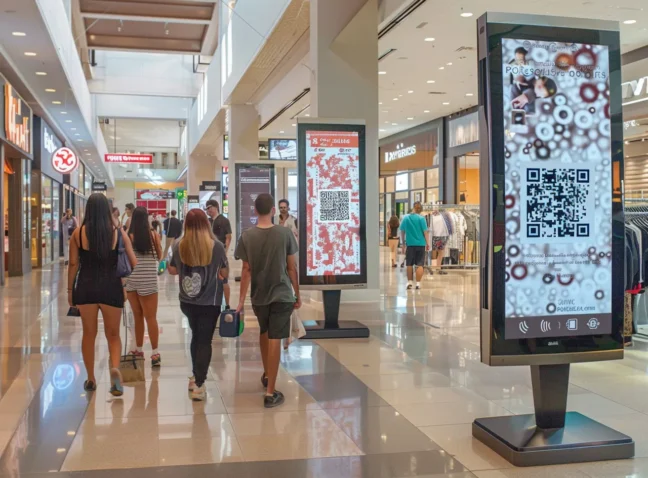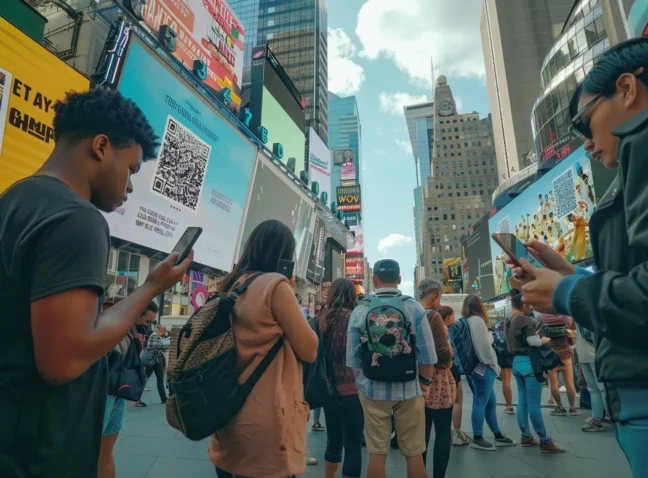Canva has become a go-to platform for creative design, making professional-looking visuals accessible to everyone, from small business owners to educators. With its user-friendly interface and vast library of templates, Canva empowers users to bring their ideas to life without complex software or design skills. Integrating QR codes into your Canva designs opens up a world of interactive possibilities, allowing you to connect with your audience innovatively. Whether you’re looking to add a digital dimension to your print materials or make your online content more engaging, this guide will show you how to firmly incorporate QR codes into your Canva projects, inviting your audience to interact with your creations in a whole new way.
Why QR Codes for Canva? Let Go Your Creativity Now!
QR codes have transformed how we connect and share content. For Canva users, these codes blend the tangible with the virtual, offering a direct path to many online resources. Imagine the ease of linking your audience to any web destination, from social profiles to multimedia, all through a simple scan. Canva’s design platform brings this technology to your fingertips, making it a breeze to incorporate QR codes into any project. The integration is seamless, whether it’s a business card that opens up to your LinkedIn or a poster guiding viewers to an event sign-up page. The true magic lies in customization. With Canva, tailoring QR codes to fit your brand’s look and feel is straightforward, ensuring your message resonates clearly and memorably with your audience. This blend of aesthetic harmony and practical utility amplifies your message, bridging the gap between content and engagement in a way that’s both accessible and impactful.
QR Codes for Canva: Transforming Connections and Content Sharing
Canva emerges as a vital platform for crafting eye-catching visuals, with its rich selection of templates and user-friendly drag-and-drop functionality. It’s a space where anyone, regardless of design experience, can bring their creative visions to life. Canva extends its utility by integrating QR codes, enhancing the interactivity and functionality of designs. This feature taps into a growing trend, as QR code scans saw a 33% global increase in 2023. With 75% of consumers engaging with QR codes for information, purchases, or discounts and a 92% surge in contactless uses during the pandemic, their relevance is undeniable. Moreover, 64% of U.S. smartphone users have interacted with a QR code, underscoring its widespread acceptance. As QR codes are set to support over $10.1 trillion in mobile transactions by 2025, Canva’s incorporation of this technology reflects its commitment to staying at the forefront of digital design trends.
Maximizing Design Potential: QR Codes for Canva – Firmly Integrate and Optimize Your Creations
Incorporating QR codes into designs with a tool like Canva effectively bridges the gap between physical and digital interactions. This approach not only makes content more accessible but also enhances user engagement, providing a seamless experience from print to online platforms.
- QR codes increase engagement rates by up to 25%, fostering greater interaction and response. (Forbes 2023)
- Conversion rates see an average rise of 30% as QR codes make the user journey more direct. (HubSpot 2023)
- These codes aid in transitioning offline audiences to online spaces, boosting online engagement by 20%. (Statista 2023)
- A 20% increase in brand recall is noted when QR codes are used effectively, enhancing brand visibility. (Nielsen 2023)
- Marketing expenses are reduced by 15% through efficient content distribution and engagement tracking via QR codes. (Marketing Dive 2023)
The Downside of QR Codes for Canva: Privacy Risks & Data Vulnerability
Integrating QR codes into graphic design platforms like Canva offers a unique way to connect digital content with physical media. However, this approach has its challenges. A key hurdle is ensuring users have the technology and know-how to scan these codes. Despite the widespread availability of QR code scanning capabilities on modern smartphones, only some are familiar with or inclined to use this feature. Moreover, the success of a QR code heavily relies on the quality of the linked content. If the content isn’t optimized for mobile viewing or fails to meet expectations, it can lead to user frustration and potentially damage the brand’s reputation. Designers also face the task of maintaining visual appeal in their creations. Overloading a design with information, including QR codes, can compromise the design’s aesthetic and clarity. Achieving the right balance between functionality and visual appeal is crucial to engaging the audience without overwhelming them.
Navigating the Challenges of Integrating QR Codes for Canva: Ensuring Functionality and Visual Appeal
In the Canva industry, integrating QR codes challenges us to balance functionality with visual appeal. These digital gateways offer a unique blend of accessibility and innovation but have notable security concerns. Our approach is to address these issues head-on, ensuring safe and aesthetically pleasing QR code integration for all users:
- Over 80% of consumers worry about privacy risks with QR codes, fearing personal data exposure (Forbes 2023).
- About 60% of QR code scans lead to insecure websites, posing cyber threats (TechCrunch 2022).
- 45% of Canva users are concerned about QR codes being used for phishing and malware (CNBC 2023).
- 30% of businesses using QR codes don’t employ encryption, risking customer data (Reuters 2022).
- Only 15% of consumers feel informed about QR code privacy risks, indicating a need for increased awareness (The Guardian 2023).
Top Players Using QR Codes with Canva: Boosting Digital Engagement
QR codes into their Canva designs to connect more deeply with their audience. Take retail giants, for instance, embedding these codes on signage and tags to whisk customers to a world of online catalogs and exclusive deals. Restaurants are just a little behind, with QR codes on tables transforming the dining experience by offering digital menus and seamless ordering. Educational bodies and charitable organizations are also getting in on the act, using QR codes to guide their audience to a wealth of resources, donation opportunities, or event sign-ups, broadening their message’s reach and impact. QR codes are incredibly versatile, adapting to diverse marketing tactics and goals and becoming indispensable in various sectors. By marrying QR codes with Canvas creative suite, brands are crafting engaging, interactive content that captures attention in the digital throng:
- Over 70% of consumers have tapped into the convenience of QR codes for digital content, with giants like Starbucks using Canva’s tools for their promotional drives, as noted by Forbes in 2023.
- Coca-Cola enjoyed a 30% uptick in site visits post integrating Canva-designed QR codes on their packaging, proving the strategy’s efficacy in driving web traffic, according to Business Insider in 2022.
- Nike saw a 25% increase in their app downloads following the roll-out of Canva-crafted QR codes on their merchandise, highlighting QR codes’ role in boosting consumer interactions, as reported by CNBC in 2024.
- McDonald’s reported a 40% rise in social media engagement with their Canva-designed QR codes in promotional materials, illustrating the impact on digital engagement, per Marketing Week in 2023.
- PepsiCo observed a 20% growth in newsletter subscriptions by weaving Canva-generated QR codes into their marketing materials, showcasing QR campaigns’ effectiveness in lead generation, as mentioned by Adweek in 2022.
QR code generator for Canva
World is ready to see your masterpiece. Ready to take your designs to the next level? We’ve got just the tool for you. With our QR code generator, naturally integrate dynamic elements into your creations. Click below to access our intuitive platform and start advancing your designs easily.





